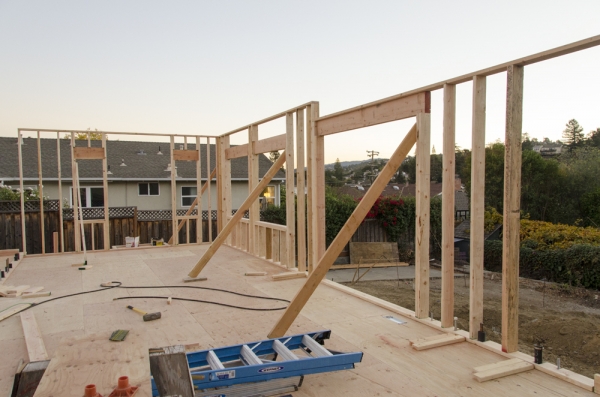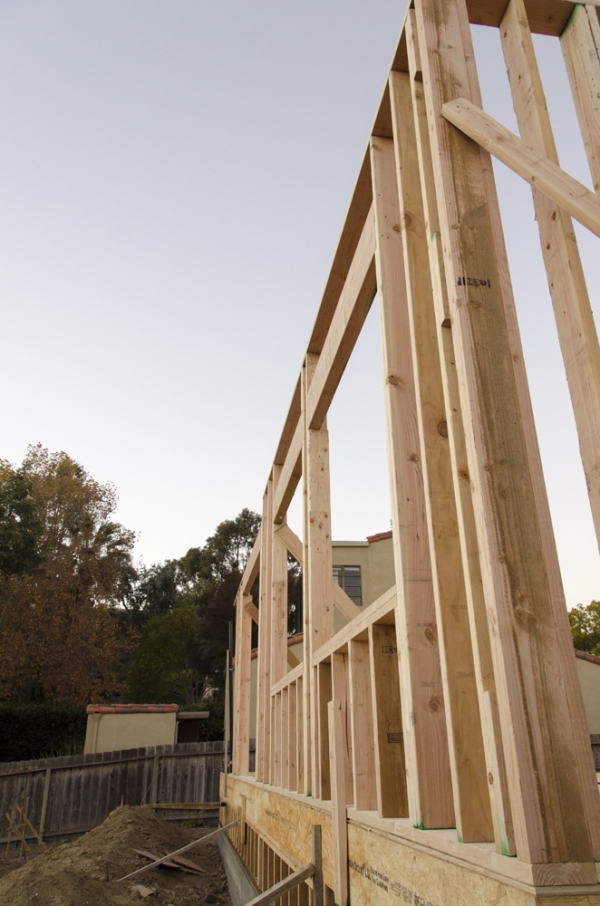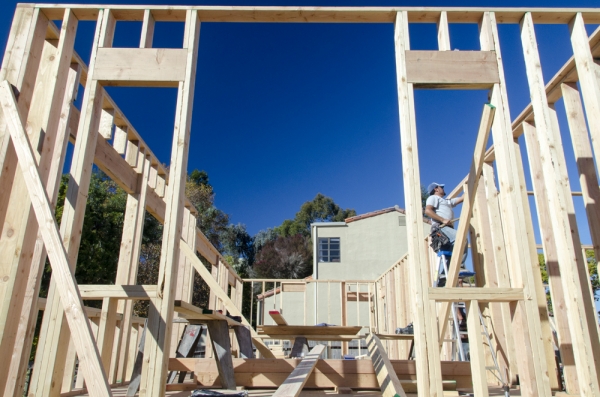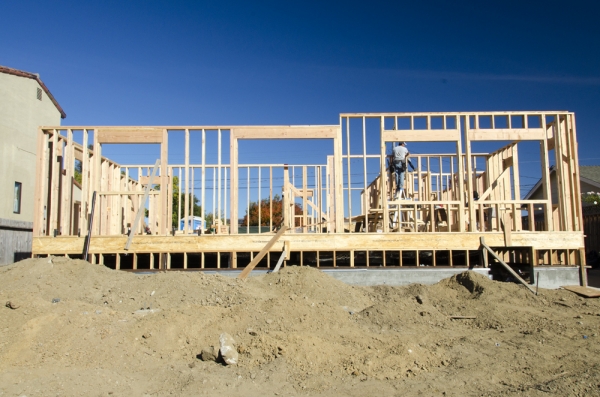We’re well into what Rich, my contractor, calls the HVP phase: Highly Visible Progress. Framing sprouts up all over the place, and almost every day something obviously new is added. It’s great to see the house taking shape! We now have a really good feel for what the layout and spaces will look and feel like…and we love it!
I’ve added some new photos to the framing gallery that I posted earlier:
Here you can see the initial stages of putting up the west wall of the great room. I was surprised at how many temporary supports are used to hold and stabilize the framing, presumably until the shear wall — the plywood skin — gets put on:
Another view of the west wall, from the southeast corner. We’re using 2x6s, instead of 2x4s, which will give us a stronger structure, and, more importantly, make it easier to route stuff through the walls while leaving room for a lot of insulation:
I’ve never understood why more Californian homes aren’t really well insulated. It’s cheap to add, and definitely pays off over the long haul.
Here’s a view of the front of the house, highlighting the strong walls that flank the big window in the office. Strong walls are engineered products containing an impressive amount of metal bracing, big hold down bolts, and tons of screws. They’re used to provide shear strength in walls that have large window openings. People love windows, but structural engineers worry about them, because they significantly weaken a wall’s structural — resisting vertical forces — and shear — resisting angular, twisting forces — strength.
By the way, those glorious blue skies are enhanced by virtue of a polarizing filter. Of course, this being San Carlos, the skies are pretty darn glorious to begin with most every day :).
Here’s the “view wall” of the living room, part of the west-side great room:
Note the absence of strong walls. That’s because there’s about two or three feet of shear wall below the floor plane (you can’t see it in the picture), which provides adequate shear strength. Plus, this portion of the great room doesn’t have a second floor over it, so the force load is smaller.
Here’s a view of the west wall of the first floor. The kitchen will be on the left, the dining room will be where the large opening is for the French doors in the middle, and the living room is where the two large window openings are on the right:
You can see the shear wall area below the floor plane, too. The second floor will cover the kitchen and dining room, and the deck will open up off the dining room.
Here’s the obligatory picture of our chief project inspector:
It took some effort to train him to walk up and down the planks used to get up from ground level (the stairs haven’t been installed yet).






























